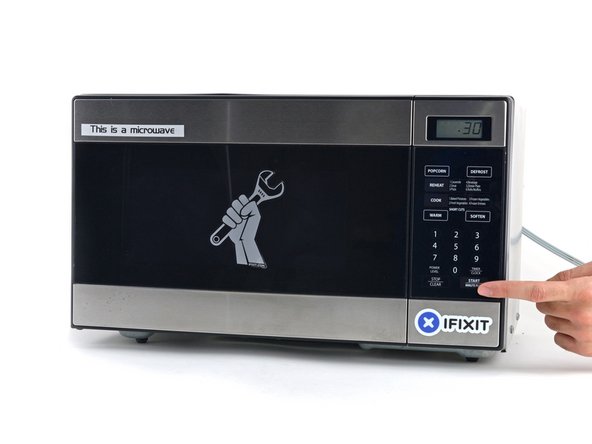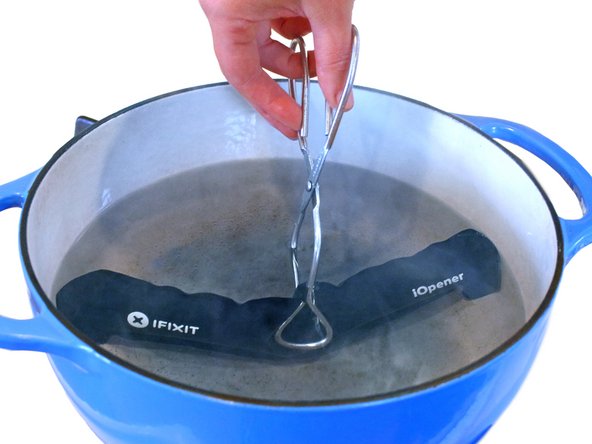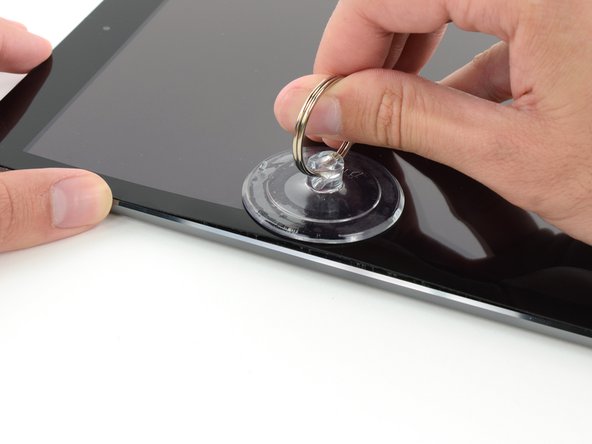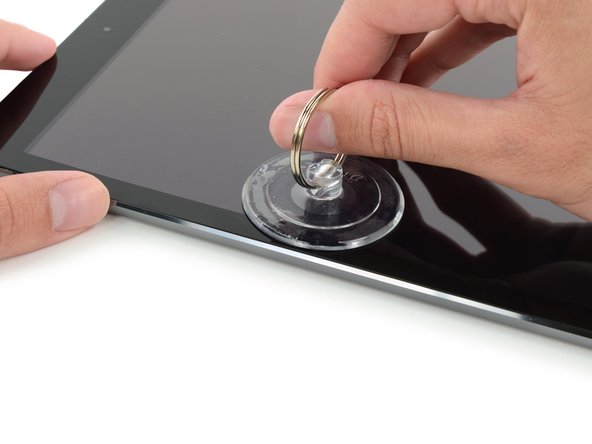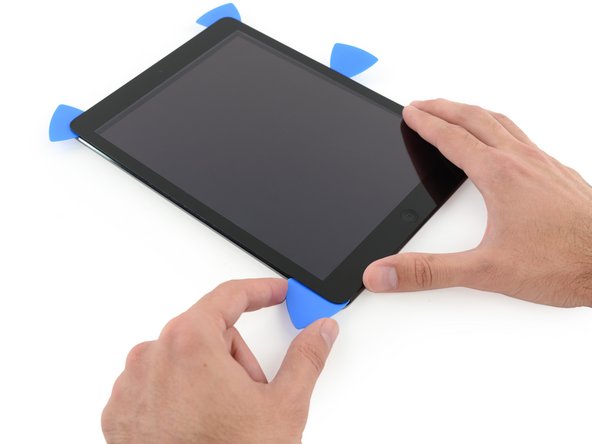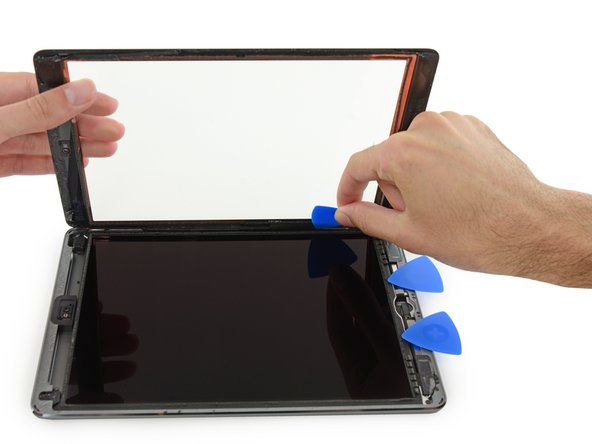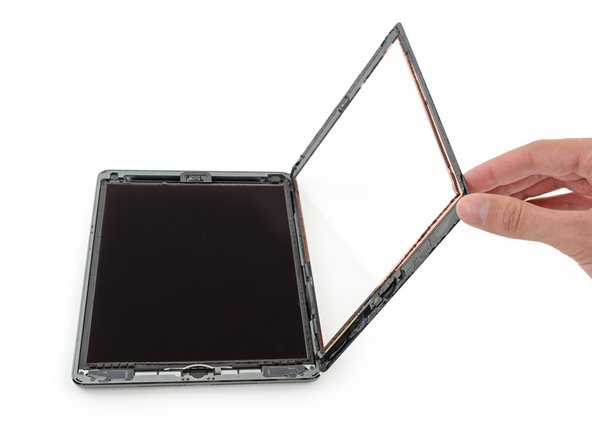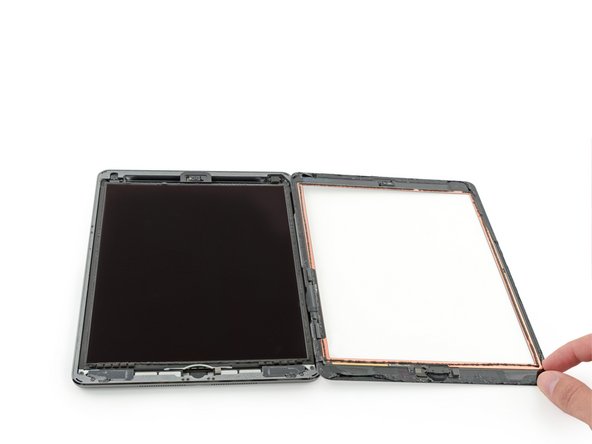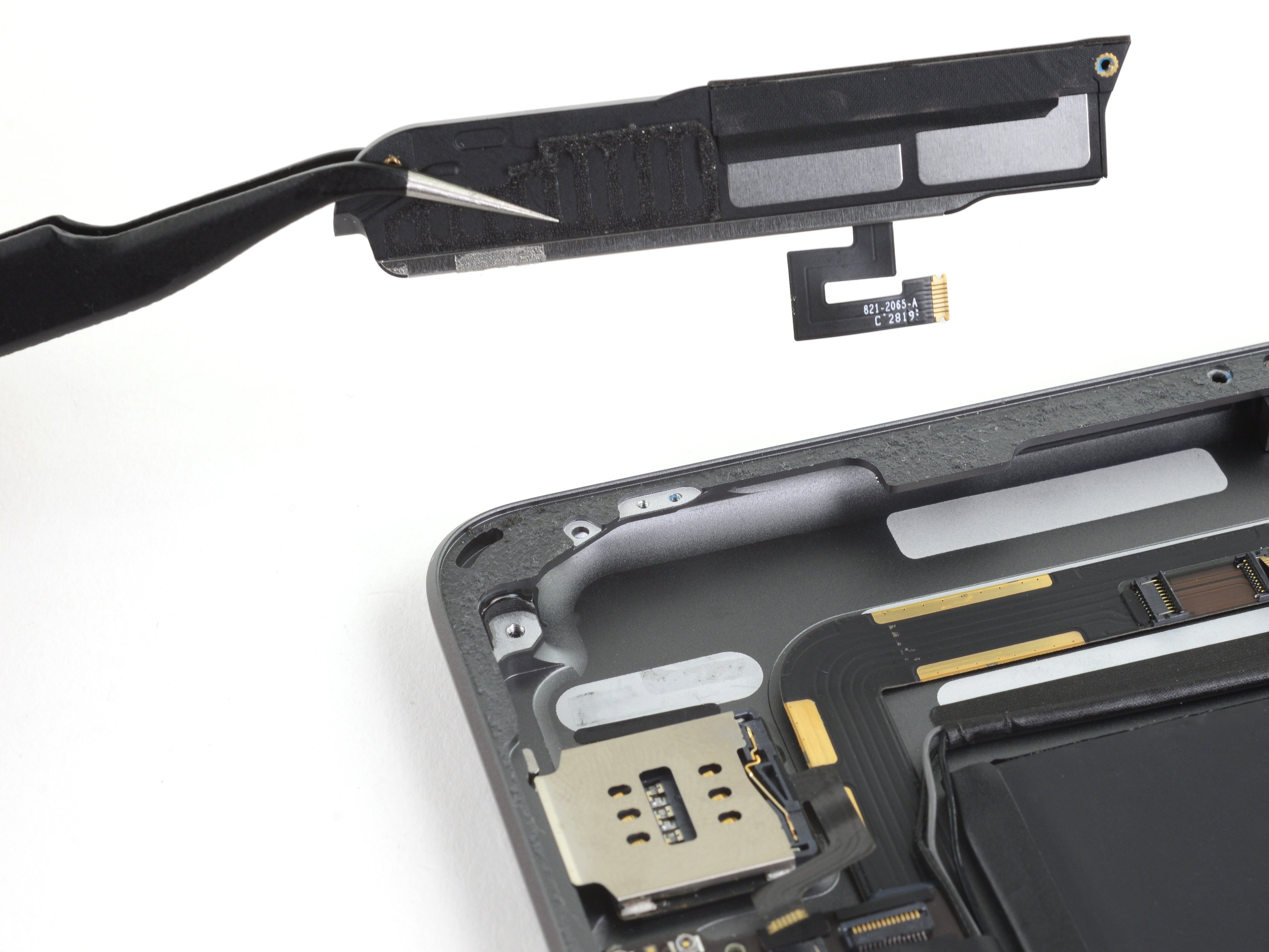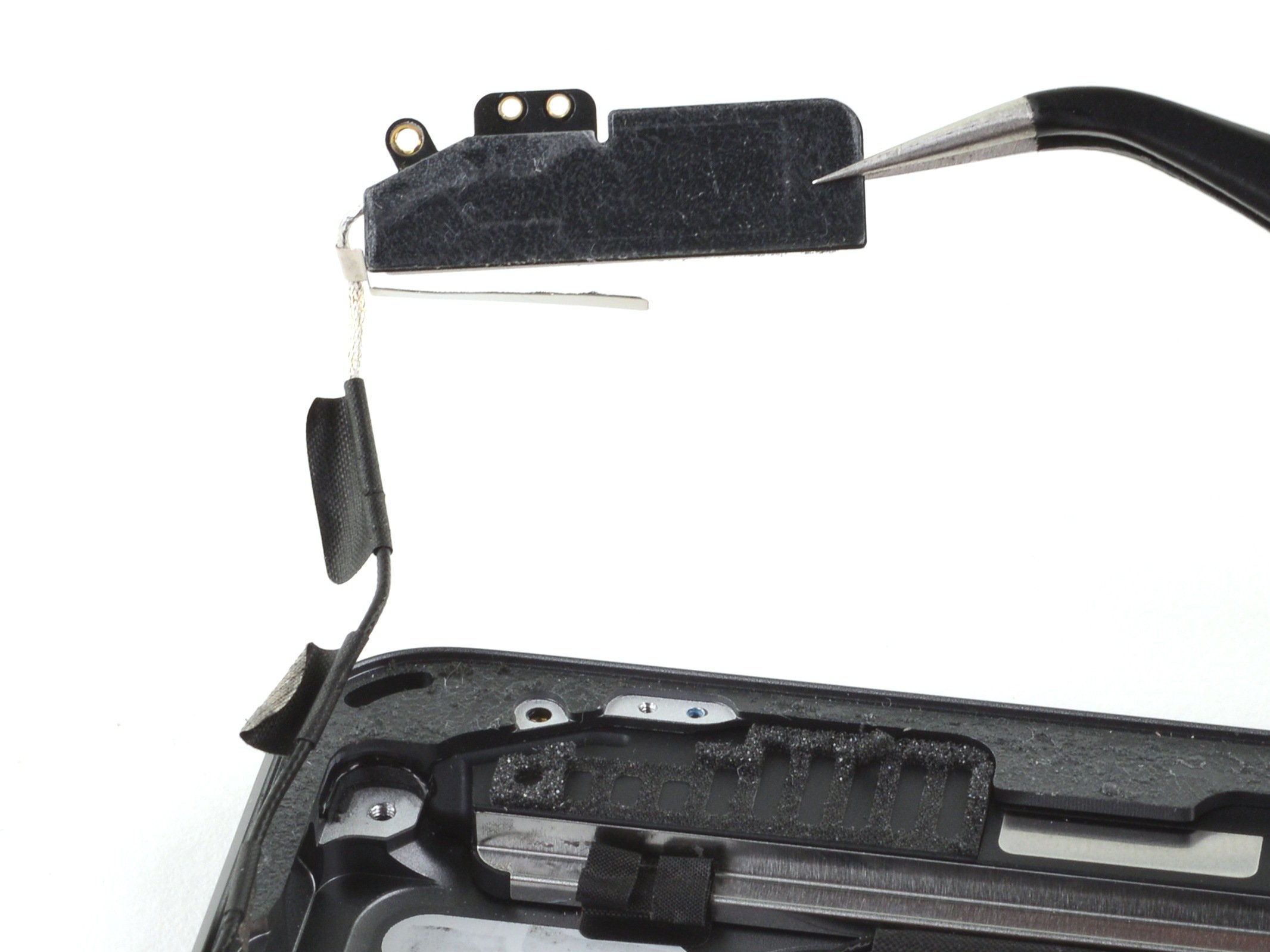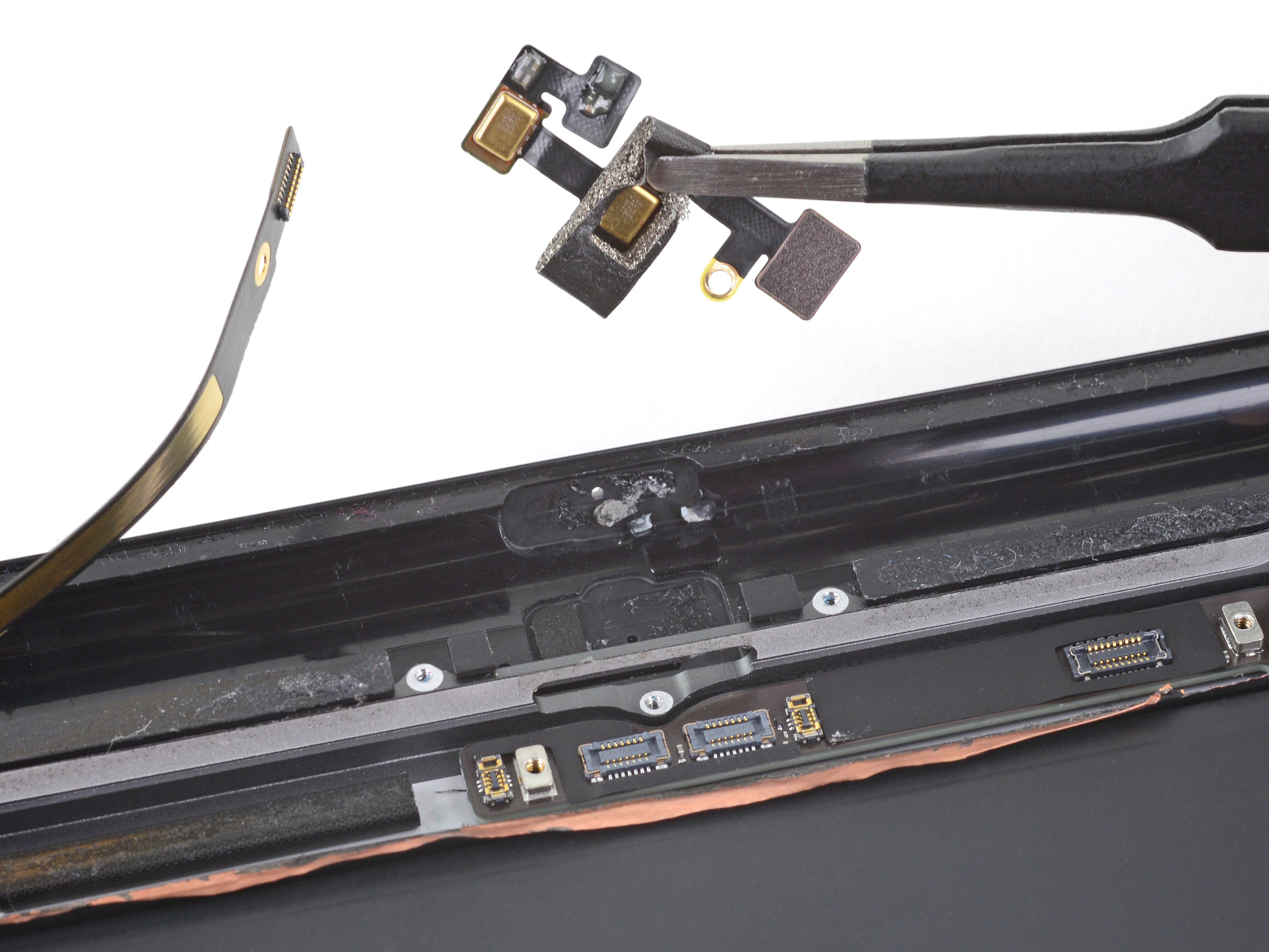iPad 7 Screen Digitizer Replacement
Duration: 45 minutes
Steps: 60 Steps
Heads up, friend: the Touch ID sensor on that home button is synced up with the logic board. To keep your fingerprint unlock game strong, you'll need to swap the original home button over and glue it onto the new front panel.
Hey there, let's walk through swapping out the screen digitizer on your iPad 7. Remember, we're just talking about the front glass and digitizer here—no LCD panel involved. Heads up: this one's for the LTE model only. If you've got the Wi-Fi version, click here . Oh, and that Touch ID home button? It's tied to the logic board, so to keep it working, you'll gotta carefully move and stick the original one onto the fresh front panel assembly. Take it easy when using a battery blocker to isolate the battery—those contacts get wrecked real quick, and that's permanent. If you're skipping the isolation, steer clear of metal tools unless you absolutely need 'em, like for screws, to dodge any battery shorts that could fry the circuits. Some pics here might look a tad different from another model, but trust me, they won't mess up the steps.
Step 1
For carousel microwaves: Ensure the plate spins freely. If your iOpener gets stuck, it could overheat and burn—let's avoid that!
Give your microwave a quick clean before we dive in—keeps any grime from the bottom from gluing itself to the iOpener.
- Pop the iOpener right in the middle of the microwave, like it's its new cozy home.
Tools Used
Step 2
Keep an eye on the iOpener's temperature – overheating can lead to a burst! Stick to under 100˚C (212˚F) to avoid any drama.
If the iOpener looks like it's puffing up, just don't touch it! Safety first.
If the iOpener's still too hot to handle in the middle, no worries – let it cool down a bit more, then get back to it. A properly heated iOpener will stay warm for up to 10 minutes. Keep it chill!
Microwave wattage plays a role, so timing might vary a bit. Your iOpener's good to go when it's just a little too warm to touch.
- Kick off the process by heating your iOpener in the microwave for thirty seconds.
- As you work through the repair, keep that iOpener warm—if it cools down, just give it another thirty seconds in the microwave to stay ready.
Tools Used
Step 3
Heads up, the iOpener can get pretty hot! Handle it with care, and if you're feeling cautious, grab an oven mitt to protect your hands.
- Alright, let's grab that iOpener out of the microwave—hold it by one of the flat ends to dodge the hot center.
Tools Used
Step 4
The iOpener gets pretty toasty, so be sure to grab it by the end tabs only. Don't burn your fingers!
No microwave? No sweat—just pop your iOpener in some boiling water to get it nice and toasty!
- Fill a pot or pan with enough water to completely cover your iOpener.
- Heat the water until it’s boiling, then switch off the heat.
- Gently place the iOpener in the hot water and let it sit for 2-3 minutes. Make sure it’s fully submerged.
- Use tongs to carefully pull the heated iOpener from the water.
- Dry the iOpener with a towel to make sure it’s ready to go.
- All set! If you ever need to reheat the iOpener, just repeat the process: boil the water, turn off the heat, and soak the iOpener for another 2-3 minutes.
Tools Used
Step 5
Slip on those safety glasses to shield your eyes, and take it easy on the LCD screen to keep it scratch-free!
This helps keep glass pieces in check and gives the display some extra strength while you're gently prying and lifting it. Nice and steady!
- If your display glass is cracked, let's keep further breakage in check and avoid any mishaps by taping it up securely.
- Grab some clear packing tape and lay overlapping strips over the iPad's display until it's fully covered.
- Stick to the guide as best you can, but remember, once the glass is cracked, it might keep breaking as you go, so you may need a metal prying tool to gently remove the pieces.
Tools Used
Step 6
- Grab the iOpener by the tag and gently place it on the left side of the iPad, right next to the home button assembly.
- Give it a minute or so to work its magic and soften up the adhesive holding the glass in place.
Tools Used
Step 7
Even though your iPad looks solid from the outside, there are some sensitive parts hiding under that front glass. To steer clear of damage, only heat and pry in the spots we point out in each step.
- While following these steps, be extra cautious when working around these sensitive spots:
- Front-facing camera
- Antennas
- Display cables
Step 8
In the next few steps, we'll show you how to use the Anti-Clamp — a nifty tool we created to make prying things open a breeze. If you're not using the Anti-Clamp, don't worry, just skip ahead three steps for an alternative method.
Want the full scoop on how to use the Anti-Clamp? Check out this guide.
If your iPad's surface is too slick for the Anti-Clamp to grip properly, a little tape on the back will give it some extra friction to keep things steady.
- Pull the blue handle back to release the Anti-Clamp's arms, like you're unlocking a secret compartment.
- Place something underneath your iPad to keep it level between the suction cups. You want it balanced and cozy.
- Position the suction cups just right—one on the top, one on the bottom, near the middle of the left edge. They're getting ready to work their magic!
- Hold the bottom of the Anti-Clamp steady and press down firmly on the top cup. Give it a little love and let the suction do its thing.
Step 9
- Give that blue handle a forward pull to lock the arms in place.
- Twist the handle clockwise a full 360 degrees, or keep going until the cups start stretching like they're waking up.
- Keep those suction cups lined up straight. If they start slipping out of alignment, loosen them a tad and get the arms back in sync.
Step 10
Ease up and twist just half a turn at a time, then give it a minute to breathe. Let the Anti-Clamp and a little time work their charm.
For the full rundown on using a hair dryer, check out this guide.
If the Anti-Clamp doesn't open up enough space, crank up the heat a bit more and give the handle a half-turn clockwise.
- Hang tight for a minute—let that adhesive chill out and create a sneaky little gap for us.
- If your screen's playing hard to get, blast a hair dryer along the left edge of your iPad to get it warmed up.
- When the Anti-Clamp opens up a decent space, slide an opening pick right under the screen.
- Go ahead and skip the next two steps.
Step 11
If your iPad's screen is totally shattered, try smoothing it out with some clear packing tape to help the suction cup stick. Or, grab a sturdy tape like duct tape and shape it into a grip to make things easier.
- Gently place the suction cup about halfway up the heated side. We’re looking for a good grip, not a wrestling match!
- While keeping your iPad steady with one hand, gently pull on the suction cup to create a little gap between the front panel and the rear case.
- Make sure the suction cup is completely flat against the screen to get that snug, tight seal. No gaps allowed!
Tools Used
Step 12
Be careful not to slide the opening pick too deep past the black bezel around the display. Going too far could cause some serious LCD damage—so stay gentle and precise.
- Slide an opening pick into the gap that the suction cup helped create.
- Gently pull the suction cup's plastic nub to break the vacuum seal, then remove it from the display assembly.
Step 13
Hey, keep that iOpener from getting too hot during the repair – always give it at least ten minutes to cool down before heating it up again.
- Warm up the iOpener again and swap it out for a fresh one.
Tools Used
Step 14
- Grab a second opening pick, line it up next to the first, and gently slide it along the iPad’s edge, popping the adhesive free as you go. Keep it smooth and steady!
Step 15
- Slide the opening pick down the side of the screen to loosen that sticky adhesive like a pro.
- If the pick gets caught in the gooey stuff, just roll it along the edge of the iPad to keep the adhesive from holding you back.
Step 16
- Grab the first pick you popped in and gently slide it towards the top corner of the iPad.
- If you spot the tip of the opening pick peeking through the front glass, don't stress! Just pull it out a tiny bit. No big deal—everything should be fine, but it's best to avoid it. That little bit of adhesive might get stuck on the LCD, and trust me, that's a pain to clean off.
Step 17
Don't let the iOpener get too hot under the collar! Give it a cool-down break for at least ten minutes before you fire it up again.
If you've got a flexible iOpener, just bend it to heat up the upper left corner and the top edge at the same time.
- Warm up the iOpener again and position it on the top edge of the iPad, right over the front-facing camera.
Tools Used
Step 18
- Gently slide the opening pick around the top left corner of the iPad to loosen the adhesive.
Step 19
Watch out not to glide that opening pick over the front-facing camera—you could end up smudging adhesive on the lens or scratching the camera itself. The upcoming steps will show you the smart way to dodge any trouble with it.
The third image points out the location of the front-facing camera and its housing in the iPad.
- Slide the opening pick along the top edge of the iPad, stopping just before you reach the camera.
Step 20
- Gently pull the pick out a little, then carefully glide the very tip along the top edge, right above the front-facing camera. Nice and smooth!
Step 21
- Keep that first pick chilling just a smidge past the front-facing camera on your iPad.
- Snag a second pick, slide it in left of the camera, and cruise it to the corner to finish slicing that adhesive along the edge—you're doing great!
Step 22
- Carefully slide the pick further under the iPad, then glide it away from the camera and toward the corner like a smooth operator.
Step 23
- Keep those three picks tucked in the corners of the iPad to stop the front panel adhesive from sticking back on prematurely.
- Reheat the iOpener and position it on the remaining side of the iPad—right along the volume and lock buttons.
Tools Used
Step 24
Keep that pick in place to prevent the adhesive from re-sealing, and grab a fresh one for the next step.
- Gently glide your opening pick around the top right corner of the iPad, loosening that adhesive as you go.
Step 25
The display cables hang out about halfway up from the bottom edge of your iPad. When you're sliding that pick, pause the party once you're around 4.5" from the bottom to avoid any cable drama.
- Grab a fresh opening pick and slide it smoothly to the middle of the right edge of your iPad, releasing the adhesive along the way. Keep it up!
Step 26
- Keep those opening picks snug in place, and gently place the reheated iOpener on the home button end of the iPad.
Tools Used
Step 27
The third image highlights the two antennas and the home button spot in the bottom case of the iPad.
- Gently slide that lower left pick over to the lower left corner to slice through the adhesive there.
- Keep the pick right there in the corner. Don't pry any further, and make sure not to pull it out of the iPad.
- The next steps will guide you on exactly where to pry to keep those components safe—stick to heating and prying only where directed.
Step 28
Slide the pick gently from the outer edge straight to the center of the iPad. Just steer clear of sliding it back toward the edge—that move could mess with the antenna!
Hey, keep that pick from the last step right where it is to stop the adhesive from sticking back together.
If you need to slide the pick over the bottom part more than once, just remove it, re-insert at the outer edge, and slide it back inwards.
- Grab a fresh pick and gently slide it over the left-hand antenna, but stop right before the home button.
- Leave the pick in place before moving on.
Step 29
- Hey, grab a fresh pick and slide it in gently to the right of the last one.
- Now, glide across the home button and right-hand antenna, using just the tip to peel away that adhesive. Smooth moves!
Step 30
Same goes for this antenna as the left one—slide from the outer edge in toward the center. Flipping it around might hurt the antenna, so stick to the plan!
- Now that the adhesive is nice and loose, slide your pick into the right corner. Glide it smoothly to the left, stopping just before you reach the Home button. Easy does it!
Step 31
- Fire up that iOpener again and stick it back on the volume control side of your iPad – easy peasy!
Tools Used
Step 32
Take it slow and steady here, friend. Make sure the adhesive is nice and warm, and you've worked through every last bit with your opening pick. No worries if you need to stop and heat it up again!
If you're feeling some serious resistance, no worries! Just leave the picks where they are, reheat, and give the iOpener another go on those stubborn spots.
- On the flip side from the volume buttons, you've got picks tucked into each corner. Give 'em a twist to lift the glass just a tad, separating that last bit of adhesive along the display cable edge.
Tools Used
Step 33
- Lift it up nice and easy to keep peeling that adhesive away along the display cable.
Step 34
Be super careful when handling the display cables—one wrong move and you could damage them! Take your time and keep everything nice and safe.
- Hold the front panel glass steady and grab an opening pick to slice through that last stubborn bit of adhesive. You're almost there!
Step 35
- Once you've pried away all that sticky adhesive, flip the glass panel open like turning a page in your favorite book and prop it up on your workspace.
- When putting things back together, wipe off any leftover adhesive from the case—and the front glass if you're reusing it—with some isopropyl alcohol, then slap on fresh adhesive by following the display adhesive application guide and using those handy pre-cut strips.
- Watch out, it's super easy to trap a flex cable between the front glass and the iPad's frame while reassembling. Keep an eye on those cables and make sure they fold nicely and tuck under the frame. If you squish the folds completely flat, the cable might get damaged for good.
Step 36
- Grab your Phillips screwdriver and twist out those four 4.3 mm screws holding the LCD in place—easy peasy!
- Keep an eye on each screw during this fix; put 'em back where they belong to keep your gadget happy and intact.
- Peel away any tape that's hiding those LCD screws to get a clear shot.
Step 37
Hey, don't go pulling that LCD out completely—it's still hooked up with some cables at the home button end.
Just ease it up from the front-facing camera side to keep things smooth.
- Grab that flat spudger and give the LCD a gentle nudge out of its spot—just enough to snag it with your fingers.
- Flip the LCD over like turning a page in a book, lifting near the camera and swinging it toward the home button end of the rear case.
- Set the LCD down carefully on a clean, soft, lint-free surface to get easy access to those display cables.
Tools Used
Step 38
- Grab your Phillips screwdriver and gently remove that single 2.3 mm-long screw holding the battery connector to the logic board—no biggie!
Step 39
Take a look at these photos—they show the battery connector tucked under the logic board. Use them as your handy reference while you safely unplug the battery.
See those cantilever springs on the logic board? They press firmly against the battery's contact pads. With both the board and battery glued in place, just slide something thin and flexible between the contact points to disconnect it.
Step 40
Hey, take it easy when blocking that battery—the contacts are super delicate and can bend or break easily, leading to some serious, no-turning-back damage.
Make sure the iFixit logo on the battery blocker is facing up—just a little logo check before you slide it in.
Don't force the battery blocker under the connector! If it’s giving you a hard time, try using a playing card to disconnect the battery instead. No need to stress!
The battery blocker or playing card should easily glide under the logic board, with no obstacles. Once it’s in, it should sit at a slight 15-degree angle. Easy peasy!
- Gently slide the battery blocker underneath the logic board's battery connector at a 35-degree angle.
- Keep the battery blocker in place as you work through the steps.
Tools Used
Step 41
- Grab your Phillips screwdriver and gently remove those three 1.4 mm screws holding the display cable bracket in place.
Step 42
- Carefully lift off the display cable bracket to free up some space.
Step 43
- Grab the flat side of your spudger and gently lift up the LCD cable connector. No need to yank it—just a smooth, steady motion.
- When you're reattaching connectors like this, take your time. Line up one side first and press it down until you hear that satisfying click. Then do the same for the other side. Avoid pushing down on the middle, or you might risk bending the pins. And trust us, you don't want that! If you're feeling stuck, schedule a repair and we'll sort it out for you.
Tools Used
Step 44
- Gently lift the LCD out and lay it face down on a clean, soft surface that’s free of lint. Make sure it’s cozy, so it’s safe while you work your magic.
Step 45
- Grab a pair of tweezers and gently peel back the tape covering the home button cable ZIF connector. Easy does it!
Tools Used
Step 46
- Grab the tip of a spudger, an opening tool, or your fingernail and gently flip up that small hinged locking flap on the home button cable ZIF connector.
Tools Used
Step 47
- Grab your tweezers and gently tug that home button ribbon cable straight out of the ZIF connector – keep it nice and steady!
Tools Used
Step 48
Hey, keep that iPad in top shape—pry only on the connectors, not the socket on the logic board, to avoid any oopsies.
- Grab the flat end of your spudger and gently pry up the two digitizer cables by lifting the press connectors straight off. Easy does it!
Tools Used
Step 49
Be careful with the home button ribbon cable! You don't want to accidentally poke or tear it while you're working. Take your time and handle it gently!
- Grab the flat end of your spudger and gently pry up the vibration isolator right below the SIM card reader.
- Go ahead and remove that isolator.
Tools Used
Step 50
The cable is lightly glued in place, so it should come off easily with a little patience.
- Grab a pair of tweezers and carefully peel the home button cable off the rear case. A steady hand will do the trick!
Tools Used
Step 51
Grab your opening pick and gently slice away any leftover adhesive still holding the front panel to the frame.
Without the right insulation, the digitizer could short out on other bits, leading to touch issues—let's avoid that hassle!
Remember, this insulation is too tiny to see with your eyes alone, and it's not the same as those foam dust strips you might find on other iPads.
- Gently remove the front panel assembly.
- If your new display starts acting up with those pesky 'ghost' or 'phantom' touches, just slap on a thin layer of insulating tape like Kapton (polyimide) tape to the marked spots on the back. Our Salvation Repair replacement screens usually come pre-insulated, so you might not need the extra tape.
- When putting it back together, before popping in that display, clear off any leftover adhesive from the iPad and give the sticky areas a good wipe with high-concentration isopropyl alcohol (90% or higher) and a lint-free cloth. This gets everything prepped for fresh adhesive and makes sure it sticks like a dream.
- Test out your iPad's features, then slap on those pre-cut adhesive strips to the back of the display following our adhesive guide before sealing it up. If you're feeling stuck, you can always schedule a repair.
Step 52
Hey, just a heads up—the home button cable is held in place with a bit of light adhesive.
- Gently peel the home button cable off the back of the front panel using your fingers.
Step 53
If the adhesive is being a bit stubborn, don't go full force with the pick. Try gently warming up the home button cable with an iOpener or a hair dryer to loosen up the adhesive a bit.
- Slip an opening pick under the home button cable to ease it away from the front panel—nice and steady!
- Gently glide it forward to slice through the adhesive bonding the home button cable to the front panel.
- Keep sliding that opening pick until you reach the home button bracket.
Tools Used
Step 54
- Ease an opening pick under the top of the home button cable to gently lift the metal contact away from the home button bracket.
Step 55
- Warm up an iOpener and gently place it on the home button bracket for about thirty seconds to loosen things up.
Tools Used
Step 56
Be careful not to bend or warp the home button bracket, or your home button might lose that satisfying click when you reassemble it!
If the home button bracket starts to bend before it fully pops off, just drop a few drops of high-concentration (90% or higher) isopropyl alcohol onto the bracket mounts. It'll help loosen things up a bit!
- Grab an opening tool and gently work your way around the home button bracket to separate it from the front panel.
Step 57
- Pop off that home button bracket like a pro!
- When it's time to put the bracket back, make sure to use a strong adhesive like E6000 to hold it firmly to the front panel assembly. That'll keep everything in place!
Step 58
Gently apply pressure. The adhesive is attached to a sensitive gasket that could tear if you’re not careful.
- Press gently on the home button from the front of the panel to break the adhesive seal. It should pop free without too much trouble.
Step 59
- Time to say goodbye to the home button assembly! Gently remove it.
- When you're putting things back together, don't forget to move the home button gasket to the new front panel or home button assembly.
- If the new panel is missing a spacer ring, make sure to bring over your existing one—don't leave it behind!
- Before sealing it up with adhesive, it's a good idea to power up your device and give your repair a quick test. This way, you can catch any issues before the final seal.
Step 60
- To put your device back together, just flip these steps backward like a pro.
- When you're done, make sure to recycle that e-waste at an R2 or e-Stewards certified spot—keep it green!
- Repair hit a snag? Give some basic troubleshooting a shot, or if you need a hand, schedule a repair.




